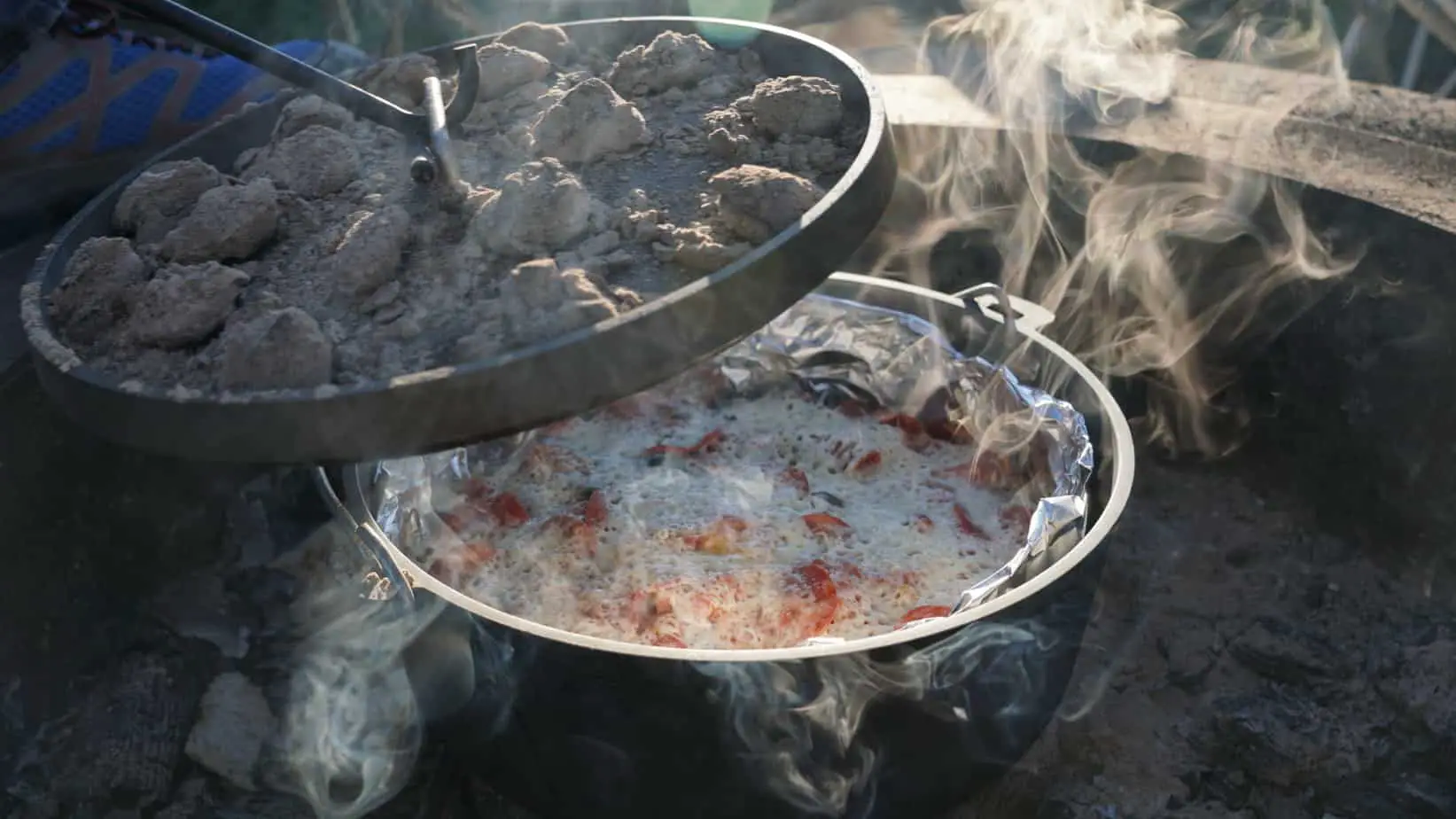
The new Dutch Oven Technology is anodized aluminum. Sure they’re slick as Teflon, lighter than cast iron, and a generation beyond the regular aluminum dutch ovens, but how do they perform?
As I opened the box of my new anodized aluminum dutch oven, I was skeptical. I love my cast iron dutch ovens almost as much as I love my children (sometimes more, depending on what’s cooking.) I own about 20 cast iron dutch ovens, and have been cooking in them since 1988.
My first impression was realizing that the anodized aluminum dutch ovens are NOT anything like those regular aluminum dutch ovens, which were disliked by just about everyone. This anodized dutch oven was extremely light weight, smooth as glass inside, and the lid fit precisely.
Anodization
The anodized smooth surface is actually slicker than Teflon coated pans. Because the anodization is part of the metal itself (not a coating), it won’t scrape off!
In words I understand, “anodization” is the process of electronically resurfacing and polishing the metal, resulting in an unbelievably smooth finish. (Technically speaking, Anodization is “an electrolytic passivation process used to increase the thickness of the natural oxide layer on the surface of metal.”)
First Meal
My first meal was barbecued ribs, potatoes, carrots, and onions. I started out browning the ribs and onions in a little oil on the bottom of the dutch oven. Even in the wind, the aluminum quickly transferred the heat throughout, with no hot spots or cold spots to contend with.
Finished browning, I drained the oil then added a couple bottles of my favorite barbecue sauce, the vegetables, and put the ribs back in to simmer for 2 hours. I rotated the anodized aluminum dutch oven every 20 minutes to compensate for the wind’s cooling effect. I resisted the urge to stir the contents, because secretly I hoped something would burn on the bottom so I could see how easily it cleaned, but no such “luck” – the high grade aluminum did such a great job dissipating the heat, nothing burned! (That’s good, right?)
The meal was perfect, as good as I would have expected out of one of my old faithful cast iron dutch ovens.
The Surprise
The big surprise was the cleanup. Anodized aluminum doesn’t need to be seasoned like cast iron due to its non-porous surface, and cleans up quickly with a little soap and water. KP (Kitchen Patrol) duty was a breeze. The dutch oven was cleaned up and back in brand new condition in under 5 minutes!
Pros and Cons
Over a few months I tested the anodized dutch oven with breads, stews, vegetables, fish, desserts, and in all kinds of weather. What a great dutch oven! I guess the best summary I can give is to say that I now own two of these dutch ovens, a 12 inch and a 10 inch. And I plan to pick up one of the 14 inch models next time my budget allows.
Weight The light weight is terrific. I even take my 10 inch dutch oven backpacking. Weighing in at just over 3 pounds, its easy to pack. And the look on others’ faces when I pull a dutch oven out of my pack to cook cobbler is priceless!
Cleanup Easy cleanup is another of its good sides. No seasoning means fast cleanups and easy care. I have managed to burn a few dishes (I’ll claim it was on purpose) and in every case, the burned material washed out easily.
Heating When it comes to heating properties, it’s difficult to say which I like more – cast iron or anodized aluminum. Each performs very differently. Cast iron builds up heat slowly, and then retains it longer. So when there are minor wind shifts, the cast iron maintains a very even heat. Anodized Aluminum conducts the heat more quickly, so when there are wind shifts or temperature changes, the oven cools faster on the affected side, but it also heats back up more quickly than the cast iron. I simply haven’t noticed that either metal is preferable in all situations – they both work differently but over the course of cooking a meal the end result is the same.
Seasoning Seasoning cast iron is one of my favorite dutch oven tasks. But it can also be annoying when I am in a hurry. A few of my cast iron dutch ovens are dedicated to specific dishes, because the porous cast iron retains the flavor of previous dishes, enhancing the flavor of the next meal. Anodized aluminum does not retain flavor. This is a blessing and a curse. Although I can’t count on the oven to pass on its heritage of barbecue flavor to future meals, I can also cook fish one meal and then cobbler the next without the cobbler tasting eerily like the previous meal’s fish.
Would I Recommend Anodized Aluminum Dutch Ovens?
Without reservation! Of course, cast iron will always be around my campsite, but visitors are going to start seeing more of these anodized aluminum dutch ovens showing up at the dinner table, and even around the campfire on long backpacking trips.
Editor’s Note: The oven tested was a 12 inch anodized aluminum dutch oven. The dutch oven taken backpacking was a 10 inch.

